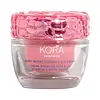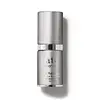What's inside
What's inside
 Key Ingredients
Key Ingredients

 Benefits
Benefits

 Concerns
Concerns

 Ingredients Side-by-side
Ingredients Side-by-side

Aloe Barbadensis Leaf Juice
Skin ConditioningRosa Canina Seed Oil
EmollientGlycerin
HumectantBalanites Roxburghii Seed Oil
Skin ConditioningCetearyl Alcohol
EmollientWater
Skin ConditioningCoconut Alkanes
EmollientLactobacillus Ferment
Skin ConditioningOleic/Linoleic/Linolenic Polyglycerides
EmollientCetearyl Olivate
Sorbitan Olivate
EmulsifyingPropanediol
SolventAscorbyl Glucoside
AntioxidantPersea Gratissima Oil
Skin ConditioningHelianthus Annuus Seed Oil
EmollientLactobacillus
Skin ConditioningButyrospermum Parkii Butter
Skin ConditioningCoco-Caprylate/Caprate
EmollientPotassium Sorbate
PreservativeEclipta Prostrata Extract
Skin ConditioningCocos Nucifera Fruit Extract
EmollientChenopodium Quinoa Seed Extract
Skin ConditioningPanax Ginseng Root Extract
EmollientSclerotium Gum
Emulsion StabilisingRubus Chamaemorus Fruit Extract
AntioxidantMorinda Citrifolia Fruit Extract
Skin ConditioningSodium Phytate
Anigozanthos Flavidus Extract
Skin ConditioningMelia Azadirachta Leaf Extract
Skin ConditioningTerminalia Ferdinandiana Fruit Extract
AntioxidantSodium Benzoate
MaskingPotassium Hydroxide
BufferingHippophae Rhamnoides Fruit Oil
Skin ProtectingTocopherol
AntioxidantMoringa Oleifera Seed Oil
EmollientAlcohol
AntimicrobialAloe Barbadensis Leaf Juice, Rosa Canina Seed Oil, Glycerin, Balanites Roxburghii Seed Oil, Cetearyl Alcohol, Water, Coconut Alkanes, Lactobacillus Ferment, Oleic/Linoleic/Linolenic Polyglycerides, Cetearyl Olivate, Sorbitan Olivate, Propanediol, Ascorbyl Glucoside, Persea Gratissima Oil, Helianthus Annuus Seed Oil, Lactobacillus, Butyrospermum Parkii Butter, Coco-Caprylate/Caprate, Potassium Sorbate, Eclipta Prostrata Extract, Cocos Nucifera Fruit Extract, Chenopodium Quinoa Seed Extract, Panax Ginseng Root Extract, Sclerotium Gum, Rubus Chamaemorus Fruit Extract, Morinda Citrifolia Fruit Extract, Sodium Phytate, Anigozanthos Flavidus Extract, Melia Azadirachta Leaf Extract, Terminalia Ferdinandiana Fruit Extract, Sodium Benzoate, Potassium Hydroxide, Hippophae Rhamnoides Fruit Oil, Tocopherol, Moringa Oleifera Seed Oil, Alcohol
Water
Skin ConditioningCyclopentasiloxane
EmollientC12-15 Alkyl Benzoate
AntimicrobialPhenyl Trimethicone
Skin ConditioningGlycerin
HumectantCyclotetrasiloxane
EmollientPPG-12/Smdi Copolymer
EmollientTheobroma Grandiflorum Seed Butter
Skin ConditioningCetyl PEG/PPG-10/1 Dimethicone
EmulsifyingDimethicone
EmollientMicrocrystalline Wax
Emulsion StabilisingSodium Chloride
MaskingPolysilicone-11
Acetyl Hexapeptide-8
HumectantCucumis Sativus Fruit Extract
EmollientTribehenin
EmollientCetyl Esters
EmollientSodium PCA
HumectantHydrolyzed Rice Protein
Skin ConditioningCeramide Ng
Skin ConditioningPhospholipids
Skin ConditioningTrehalose
HumectantGlycine Soja Protein
EmulsifyingTocopheryl Acetate
AntioxidantGlycine
BufferingLysine
Skin ConditioningPalmitoyl Hexapeptide-12
Skin ConditioningPalmitoyl Tripeptide-1
Skin ConditioningPalmitoyl Tetrapeptide-7
Skin ConditioningAscorbyl Palmitate
AntioxidantPEG-10 Phytosterol
EmulsifyingRetinyl Palmitate
Skin ConditioningProline
Skin ConditioningButylene Glycol
HumectantDimethiconol
EmollientEthylhexyl Cocoate
EmollientPEG/PPG-18/18 Dimethicone
EmulsifyingUrea
BufferingEthylhexylglycerin
Skin ConditioningCaprylyl Glycol
EmollientCarbomer
Emulsion StabilisingHexylene Glycol
EmulsifyingDipeptide Diaminobutyroyl Benzylamide Diacetate
Skin ConditioningHydrogenated Lecithin
EmulsifyingHydroxycetyl Hydroxyethyl Dimonium Chloride
Polysorbate 20
EmulsifyingSuperoxide Dismutase
AntioxidantXanthan Gum
EmulsifyingSalicylic Acid
MaskingSorbic Acid
PreservativeCitric Acid
BufferingLecithin
EmollientGlycosphingolipids
EmollientPhenoxyethanol
PreservativeSodium Benzoate
MaskingPotassium Sorbate
PreservativeSodium Dextran Sulfate
Gel FormingPentaerythrityl Tetra-Di-T-Butyl Hydroxyhydrocinnamate
AntioxidantWater, Cyclopentasiloxane, C12-15 Alkyl Benzoate, Phenyl Trimethicone, Glycerin, Cyclotetrasiloxane, PPG-12/Smdi Copolymer, Theobroma Grandiflorum Seed Butter, Cetyl PEG/PPG-10/1 Dimethicone, Dimethicone, Microcrystalline Wax, Sodium Chloride, Polysilicone-11, Acetyl Hexapeptide-8, Cucumis Sativus Fruit Extract, Tribehenin, Cetyl Esters, Sodium PCA, Hydrolyzed Rice Protein, Ceramide Ng, Phospholipids, Trehalose, Glycine Soja Protein, Tocopheryl Acetate, Glycine, Lysine, Palmitoyl Hexapeptide-12, Palmitoyl Tripeptide-1, Palmitoyl Tetrapeptide-7, Ascorbyl Palmitate, PEG-10 Phytosterol, Retinyl Palmitate, Proline, Butylene Glycol, Dimethiconol, Ethylhexyl Cocoate, PEG/PPG-18/18 Dimethicone, Urea, Ethylhexylglycerin, Caprylyl Glycol, Carbomer, Hexylene Glycol, Dipeptide Diaminobutyroyl Benzylamide Diacetate, Hydrogenated Lecithin, Hydroxycetyl Hydroxyethyl Dimonium Chloride, Polysorbate 20, Superoxide Dismutase, Xanthan Gum, Salicylic Acid, Sorbic Acid, Citric Acid, Lecithin, Glycosphingolipids, Phenoxyethanol, Sodium Benzoate, Potassium Sorbate, Sodium Dextran Sulfate, Pentaerythrityl Tetra-Di-T-Butyl Hydroxyhydrocinnamate
 Reviews
Reviews

Ingredients Explained
These ingredients are found in both products.
Ingredients higher up in an ingredient list are typically present in a larger amount.
Glycerin is already naturally found in your skin. It helps moisturize and protect your skin.
A study from 2016 found glycerin to be more effective as a humectant than AHAs and hyaluronic acid.
As a humectant, it helps the skin stay hydrated by pulling moisture to your skin. The low molecular weight of glycerin allows it to pull moisture into the deeper layers of your skin.
Hydrated skin improves your skin barrier; Your skin barrier helps protect against irritants and bacteria.
Glycerin has also been found to have antimicrobial and antiviral properties. Due to these properties, glycerin is often used in wound and burn treatments.
In cosmetics, glycerin is usually derived from plants such as soybean or palm. However, it can also be sourced from animals, such as tallow or animal fat.
This ingredient is organic, colorless, odorless, and non-toxic.
Glycerin is the name for this ingredient in American English. British English uses Glycerol/Glycerine.
Learn more about GlycerinPotassium Sorbate is a preservative used to prevent yeast and mold in products. It is commonly found in both cosmetic and food products.
This ingredient comes from potassium salt derived from sorbic acid. Sorbic acid is a natural antibiotic and effective against fungus.
Both potassium sorbate and sorbic acid can be found in baked goods, cheeses, dried meats, dried fruit, ice cream, pickles, wine, yogurt, and more.
You'll often find this ingredient used with other preservatives.
Learn more about Potassium SorbateSodium Benzoate is a preservative. It's used in both cosmetic and food products to inhibit the growth of mold and bacteria. It is typically produced synthetically.
Both the US FDA and EU Health Committee have approved the use of sodium benzoate. In the US, levels of 0.1% (of the total product) are allowed.
Sodium benzoate works as a preservative by inhibiting the growth of bacteria inside of cells. It prevents the cell from fermenting a type of sugar using an enzyme called phosphofructokinase.
It is the salt of benzoic acid. Foods containing sodium benzoate include soda, salad dressings, condiments, fruit juices, wines, and snack foods.
Studies for using ascorbic acid and sodium benzoate in cosmetics are lacking, especially in skincare routines with multiple steps.
We always recommend speaking with a professional, such as a dermatologist, if you have any concerns.
Learn more about Sodium BenzoateWater. It's the most common cosmetic ingredient of all. You'll usually see it at the top of ingredient lists, meaning that it makes up the largest part of the product.
So why is it so popular? Water most often acts as a solvent - this means that it helps dissolve other ingredients into the formulation.
You'll also recognize water as that liquid we all need to stay alive. If you see this, drink a glass of water. Stay hydrated!
Learn more about Water